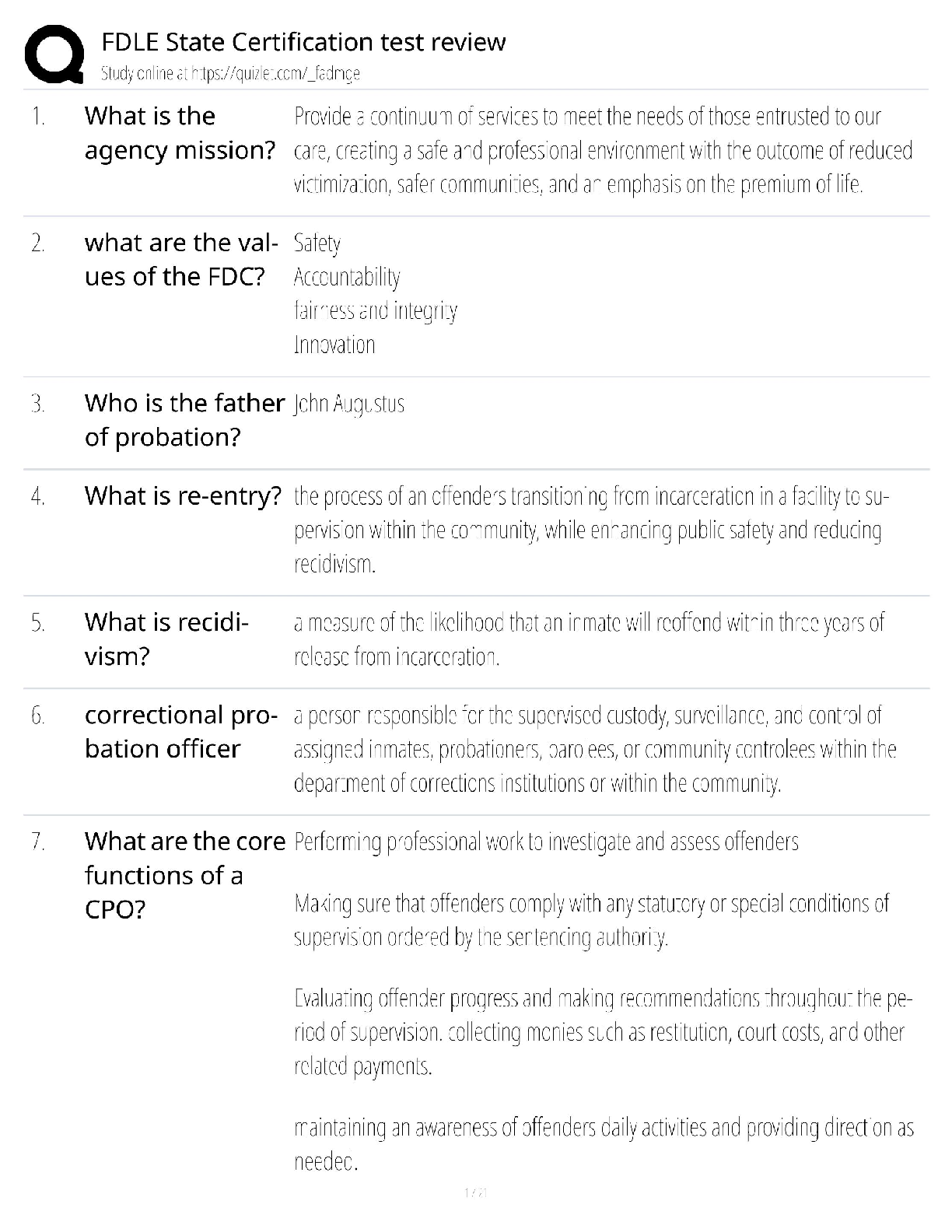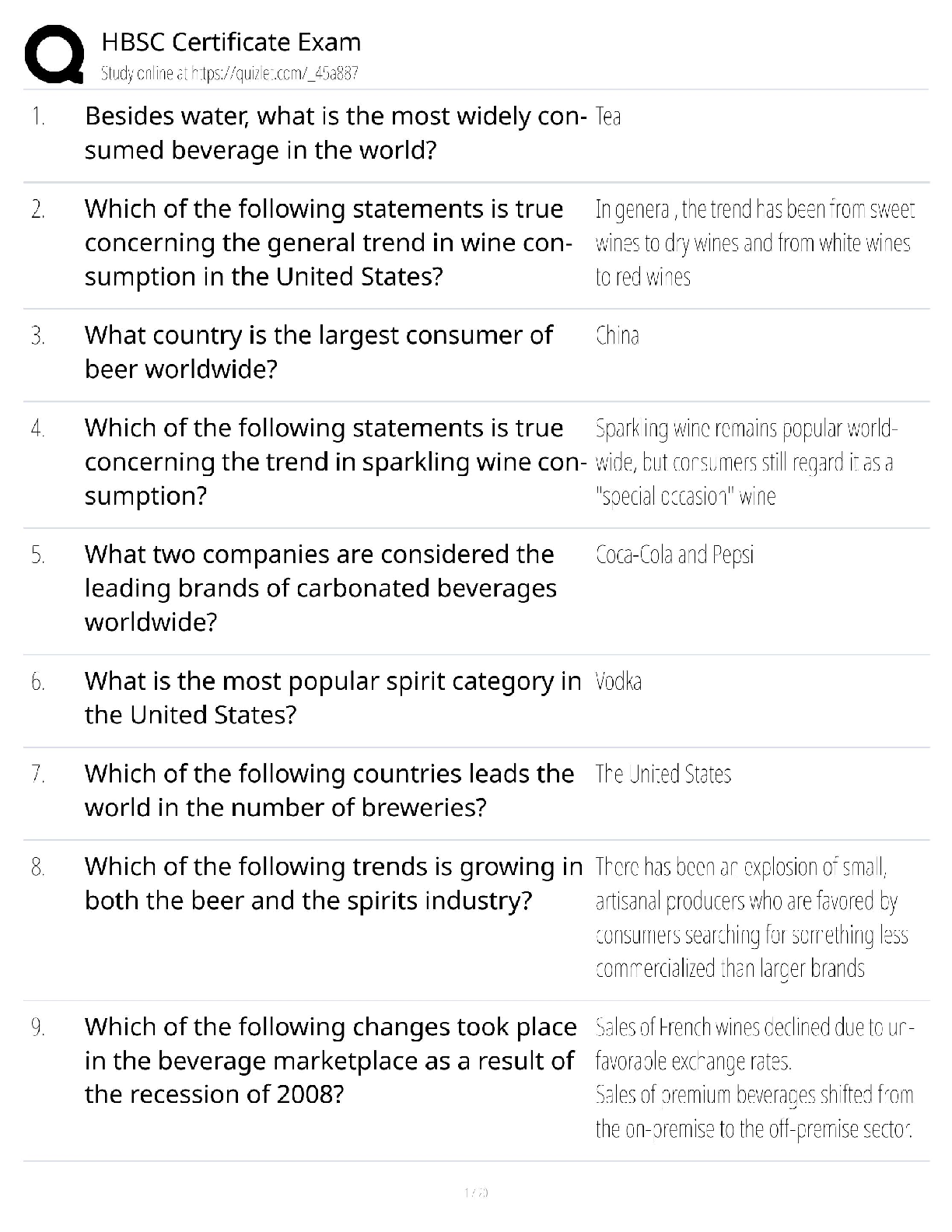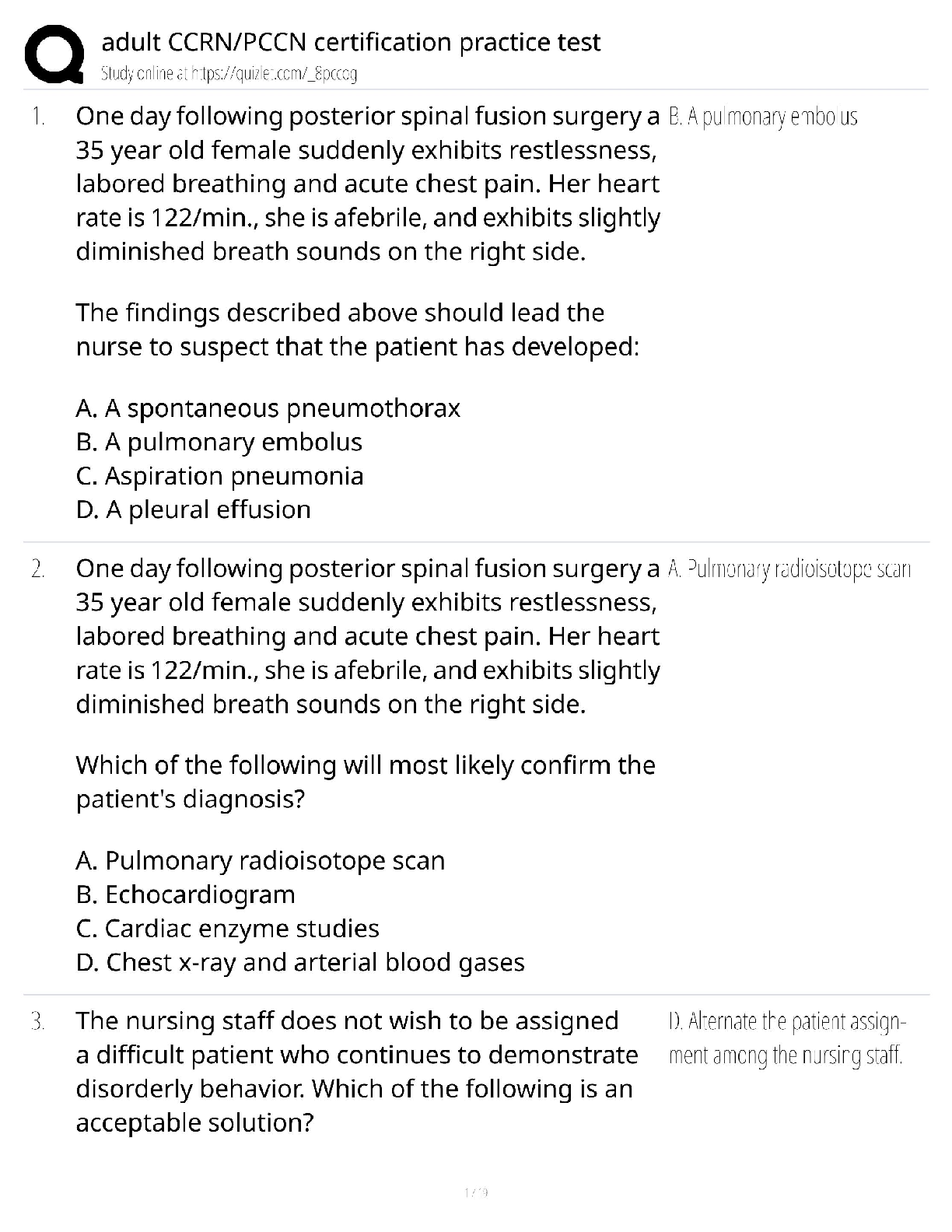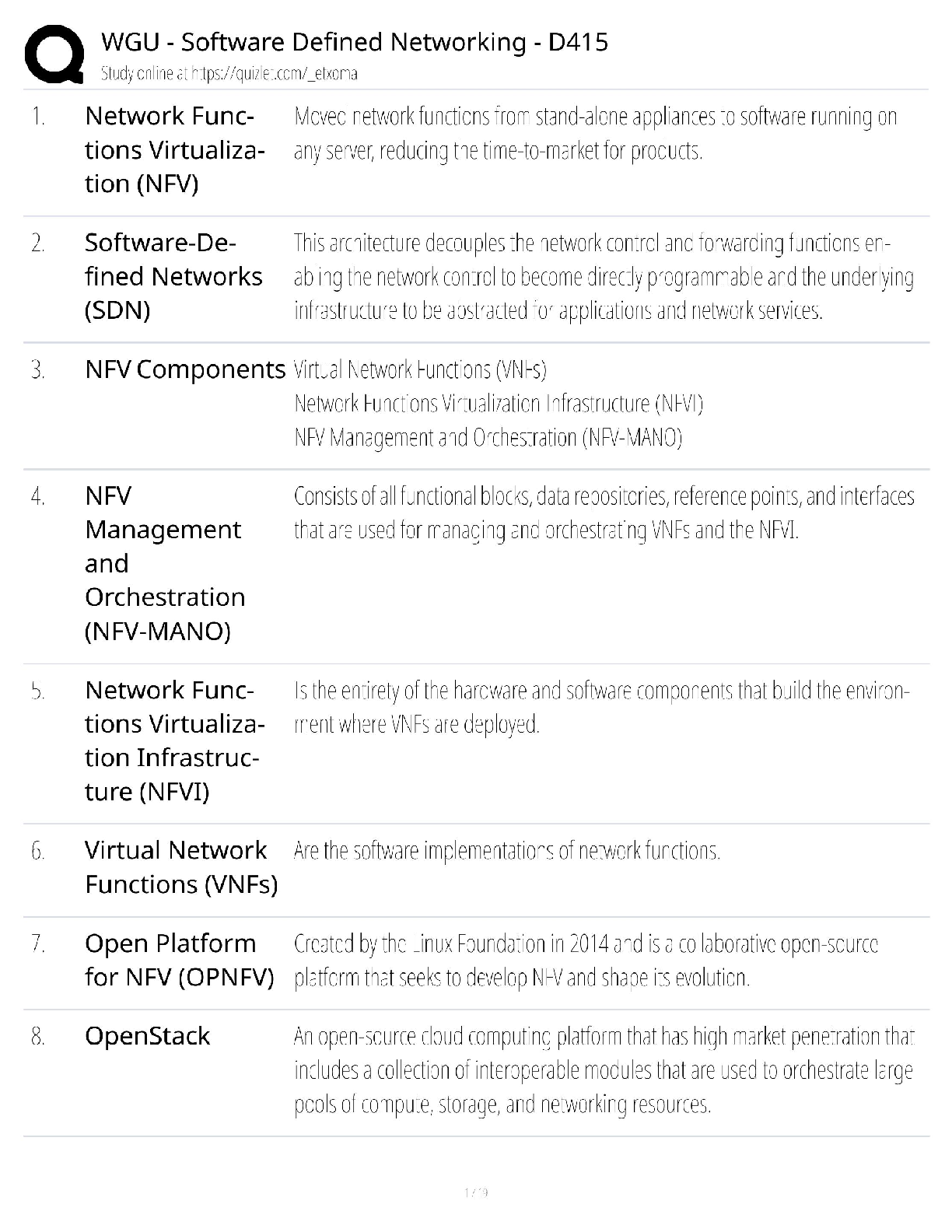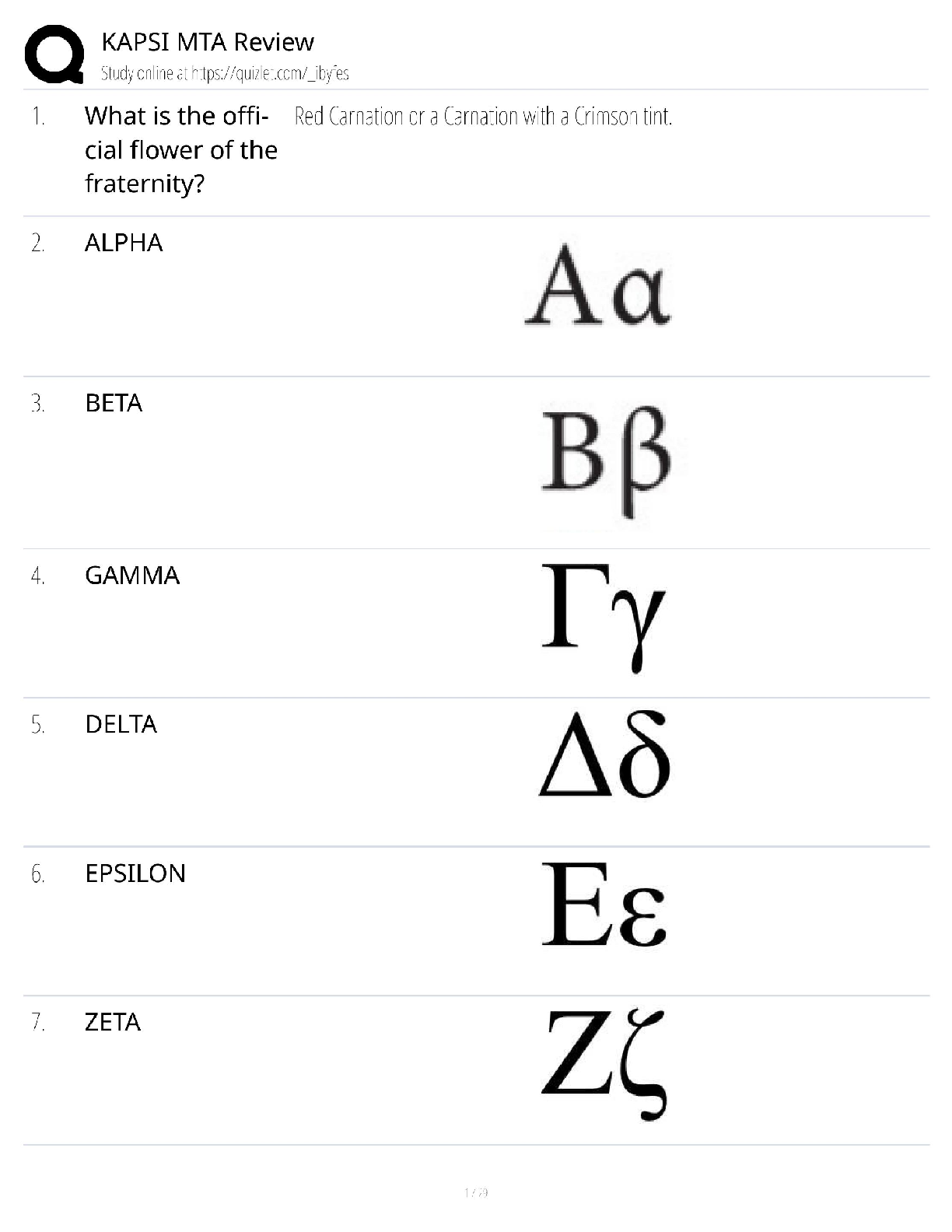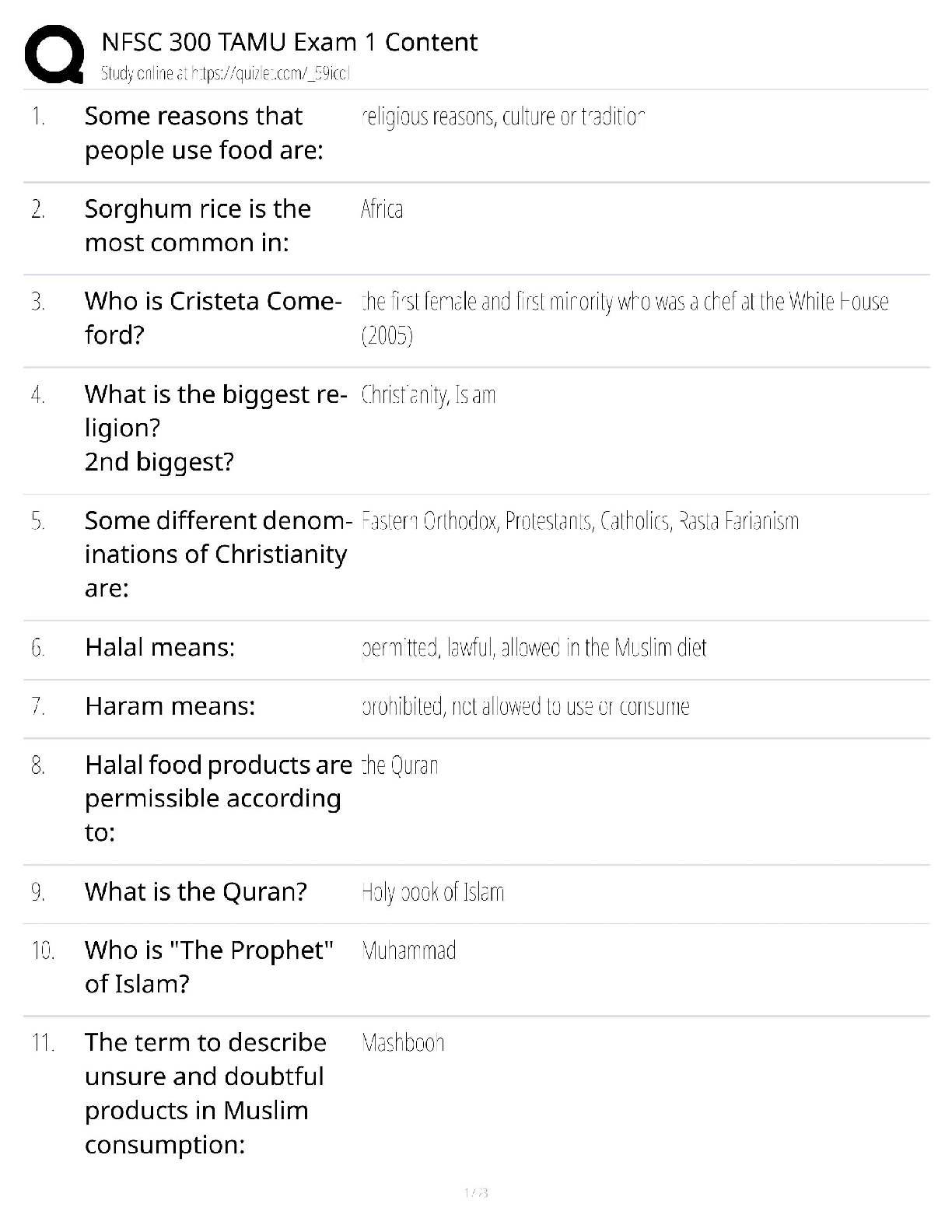*NURSING > QUESTIONS & ANSWERS > Module 13: Alterations of Renal and Urinary Tract Function. All Answers Explained. Graded A | Walden (All)
Module 13: Alterations of Renal and Urinary Tract Function. All Answers Explained. Graded A | Walden University
Document Content and Description Below
Module 13: Alterations of Renal and Urinary Tract Function Which information will help the nurse determine the severity of a patient's urinary tract obstruction? A patient has a dilated ureter from ... an obstructed upper urinary tract. Which term will the nurse use to describe this condition? A patient had both kidneys obstructed but is now unobstructed and urinating large amounts of urine. What term should the nurse use to describe this process? A patient has a loss of urine when laughing or sneezing. Which type of incontinence does the nurse suspect the patient is experiencing? A nurse is describing the following conditions: detrusor hyperreflexia, vescicosphincter dyssynergia, and detrusor areflexia/acontractile. Which type of urinary disorder is the nurse discussing? A patient has an obstruction of urine flow in the lower urinary tract. After the patient voids, what equipment should the nurse have ready? A patient has renal cell carcinoma that is confined to the kidney capsule. What stage is the patient's cancer? A patient has bladder cancer. Which assessment finding is most typical for this patient? Which patient is most prone to cystitis? A patient has pyelonephritis from chronic backup of urine into the ureters and kidneys. Which predisposing factor does this patient have for pyelonephritis? A patient with glomerulonephritis has nephritic type sediment. What will the nurse observe in the urine? A nurse is asked why hyperlipidemia occurs in nephrotic syndrome. What is the nurse's best response? What type of diet will the nurse encourage for a patient with nephrotic syndrome? Which of the following concepts should the nurse include when describing the pathophysiology for chronic renal disease? A patient has an acute kidney injury. Which intervention will the nurse incorporate into a plan of care for this patient? A 58-year-old post menopausal woman comes to your office with a constellation of complaints that includes significant and worsening lower back pain, fatigue, and frequent episodes of bacterial pharyngitis. Work up reveals anemia, compression fractures T12, L1, and L3, elevated serum creatinine and serum calcium. The most likely diagnosis is: A) Post-menopausal osteoporosis B) Amyloidosis C) Multiple myeloma D) Lupus Erythematosis E) Primary hyperparathyroidism [Show More]
Last updated: 1 year ago
Preview 1 out of 4 pages

Buy this document to get the full access instantly
Instant Download Access after purchase
Buy NowInstant download
We Accept:

Reviews( 0 )
$6.00
Can't find what you want? Try our AI powered Search
Document information
Connected school, study & course
About the document
Uploaded On
Feb 04, 2020
Number of pages
4
Written in
All
Additional information
This document has been written for:
Uploaded
Feb 04, 2020
Downloads
0
Views
180






.png)
.png)
.png)
.png)
.png)
.png)
.png)

